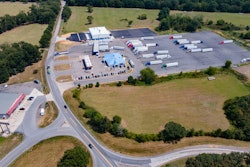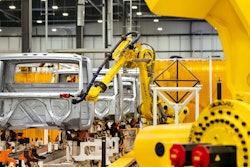“What are you hearing?” It’s probably the question I hear the most.
I get it. Comes with the territory. When you’re doing interviews every week, attending events, regularly surveying executives, you hear quite a bit.
Especially this year. When business is this wildly unpredictable and external shocks seem to be hitting each month, people want to know if their experience is being shared. There’s strength in numbers.
I’ve got good news and bad news.
Yes, business is down. Our third-quarter TPS MarketPulse survey confirmed what I’ve heard from dealers and aftermarket operations across our space. But it’s not uniformly down.
[RELATED: Truck makers get first win in litigation with California over emission regulations]
Truck dealers are taking the biggest beating due to the evaporation of new equipment demand and order rates that will not recover anytime soon. The American truck fleet is contracting. Carriers are not just halting their purchasing; they’re also offloading equipment. There isn’t enough freight to run the equipment they have.
Deliveries were already outpacing orders entering the year, and 10 months of weak order totals mean the bottom will fall out of the delivery space very soon. I’m told for some dealers, it already has.
The trailer market isn’t rosier. Demand fell out of that space in 2023 and remains depressed. Year-over-year sales data is turning positive but mostly because last year was such a slog. Selling five trailers instead of four in a month is a boost. I won’t knock it. But when a dealer historically averages seven, netting five hardly deserves a victory parade.
Both channels have turned to their parts and service departments to pick up the slack, with mixed results.
I’ve talked to some dealers with strong, established fixed operations departments who say they’ve increased their sales and marketing spends in these areas and are being rewarded with more business.
These dealers aren’t winning in a vacuum — they’ve also stocked up on inventory, adding lines and price points to attract new buyers or be more malleable with financially strapped customers — they’ve realized the obvious. The revenue they anticipated from new sales isn’t coming in 2025 (and shouldn’t be counted on for 2026). Keeping a healthy bottom line requires diving into the segments of their business that haven’t disappeared.
Though that’s not to say the parts and service business is booming.
An aging but contracting equipment fleet doesn’t expand demand so much as shift where it’s found. Warranty repair rates fall. Aftermarket wear parts see sales volumes slip but turn rates increase. C and D movers see an uptick in demand as customers run equipment past their natural exit points.
I’m told all of this is happening in the parts market. And service departments are even more in flux.
Some sources tell me their service shops are booming. Customers aren’t in a hectic rush to get equipment back immediately, so they’re sending sidelined equipment to finally get the longer repairs they need completed. On the flip side, other sources say other customers are pulling back their repair spends, doing more work in-house to keep expenses down.
[RELATED: What about the FleetPride and TruckPro merger? See my thoughts here]
As tough as this all seems, I’m also hearing this market isn’t without its share of opportunities. For-hire line haul and LTL carriers have been hit hardest by the freight recession, but for many sources (especially in the aftermarket), that’s only a small share of their customer base.
Vocational new truck demand plateaued but construction investment has jumped since 2021. A few spring and suspension sources with construction and infrastructure-centric customer bases say they are outperforming their markets, and other dealer and aftermarket sources who have been able to increase their volumes in those segments claim to be avoiding the worst of the freight recession.
I’ve also heard a few sources say they’re following the money. Data center production (to support AI and advanced computing) is booming. These sources say they’ve developed relationships and contracts with the construction operations supporting those projects in their area.
Not in a data center growth market? Another source heavily tied to food transportation said their business has been nearly unaffected by the freight recession. Which makes sense. People need to eat, and non-cross border food logistics is a steady market.
Then there’s all the category stuff. I’ve heard from dealers who expanded their all-makes categories and got business from customers who’ve never bought from them before. An aftermarket source said his reman line has never been more in demand.
I even had a chat recently with a source flabbergasted by the success of their own e-commerce site. They said fleshing out the site with product data and images, and then promoting the site through marketing and internal sales channels, had led to more accessory and bolt-on sales this year than ever before.
So, the market is soft, but not everywhere. Not for everyone. And sources unwilling to sit idly by and wait for it to turn around claim to be finding little wins today they intend to leverage into bigger wins tomorrow.
That’s what I’m hearing.












